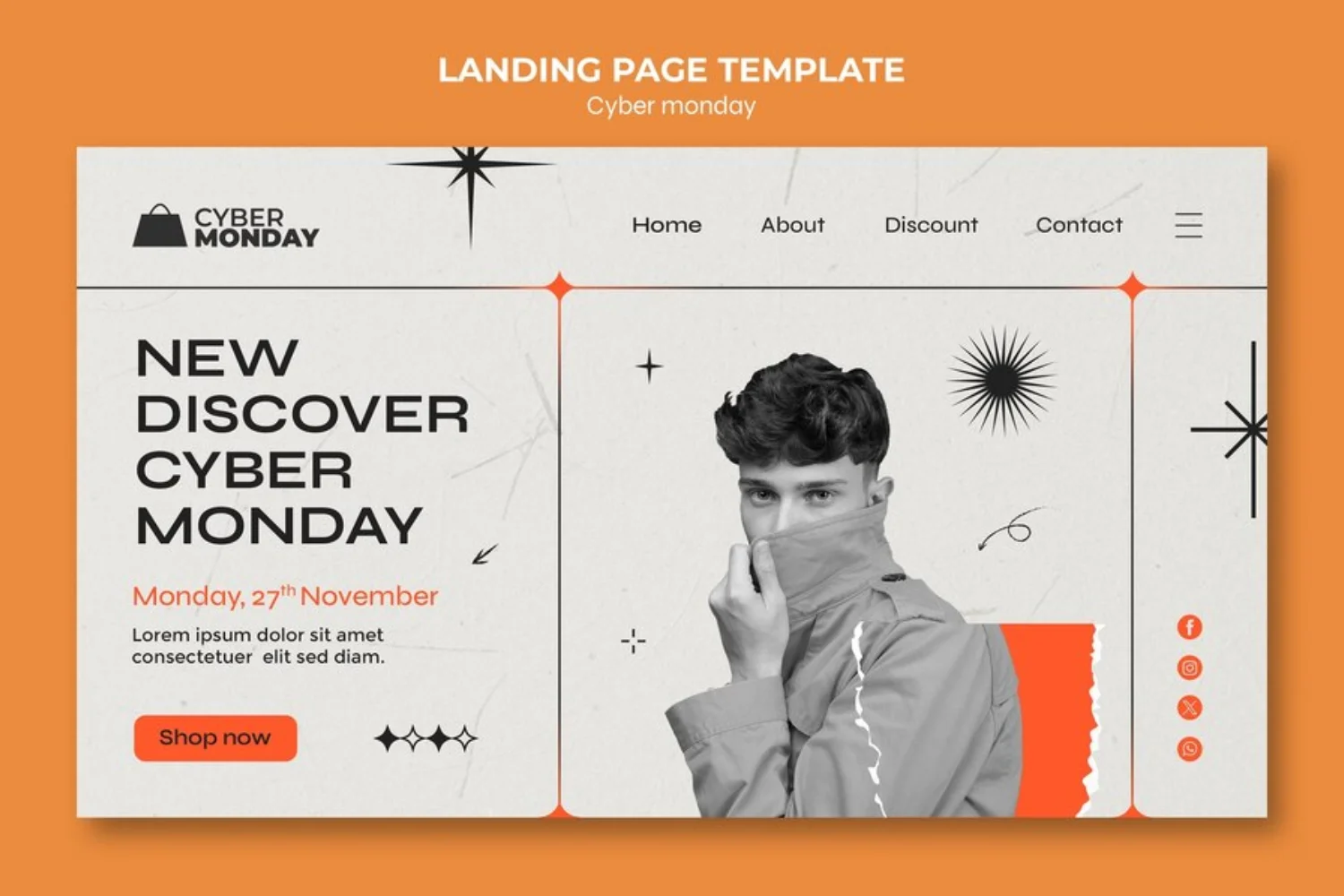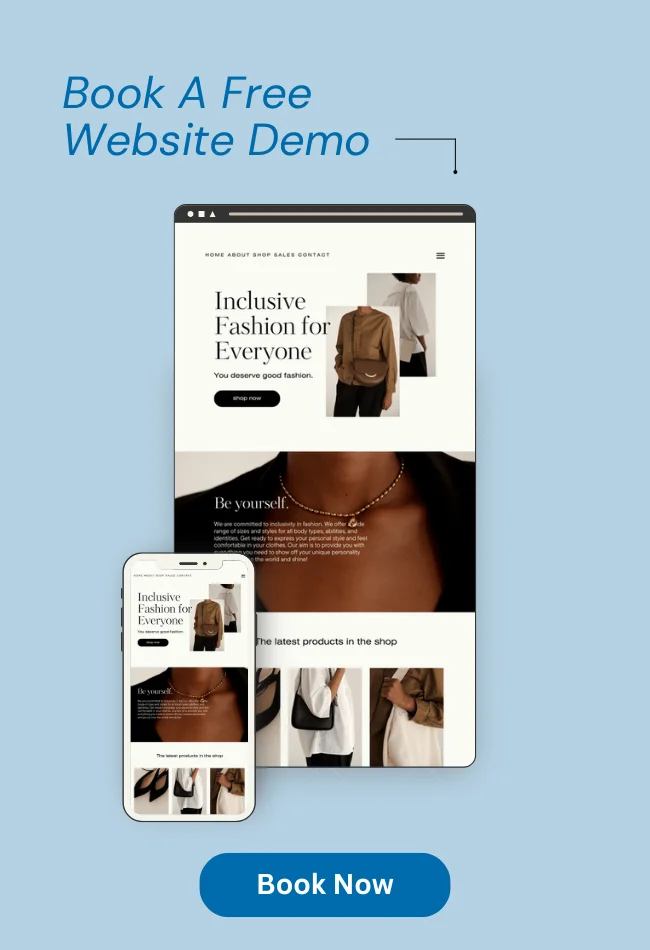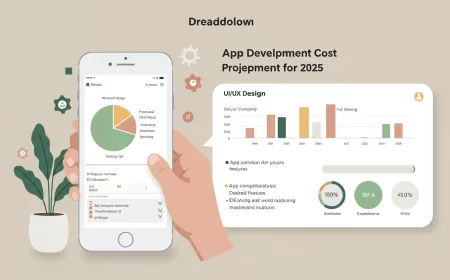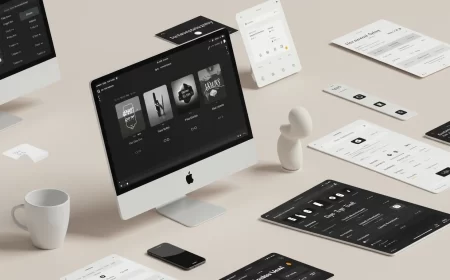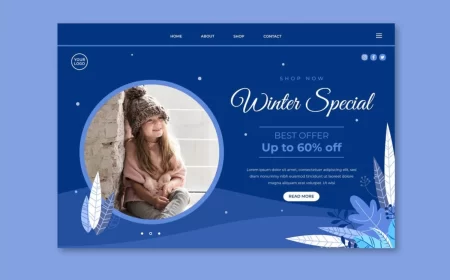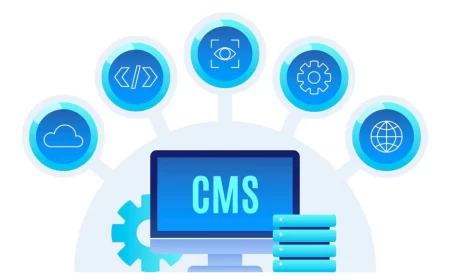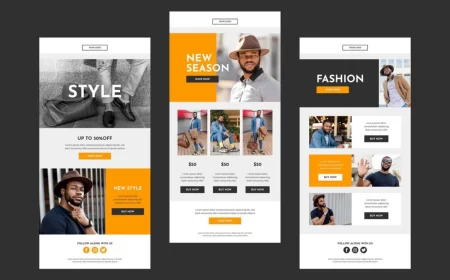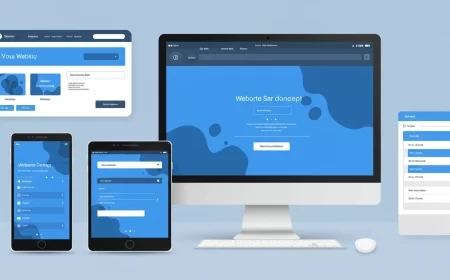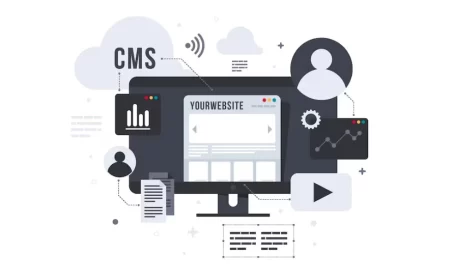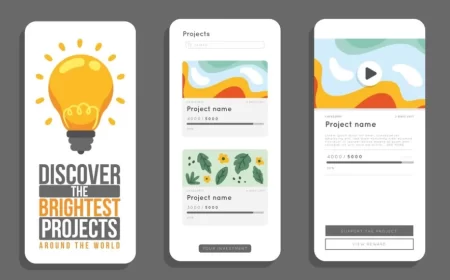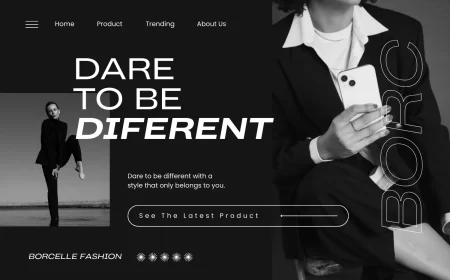In the dynamic digital landscape, a website is more than just an online brochure; it’s a living, breathing entity that serves as the primary touchpoint between a brand and its audience. To remain relevant, engaging, and effective, websites must continuously evolve. Modern website design is not a fleeting trend but a philosophy centered on creating intuitive, high-performing, and visually captivating experiences that meet the ever-increasing expectations of today’s users. It’s about blending aesthetic appeal with seamless functionality to drive engagement, conversions, and brand loyalty.
This comprehensive guide will explore the core principles that define modern website design, delve into the key characteristics and emerging trends shaping the digital realm, and outline best practices for implementing a truly contemporary online presence. We’ll also showcase inspiring examples from various industries that exemplify cutting-edge design. Whether you’re planning a new site, considering a redesign, or simply aiming to understand what makes a website truly “modern,” this guide will provide you with the insights needed to craft a digital experience that stands out.
What Defines Modern Website Design?
At its heart, modern website design is characterized by a user-centric approach, prioritizing the needs and behaviors of the audience above all else. It’s about creating a harmonious balance between form and function, ensuring that the site is not only beautiful but also highly effective. Key defining aspects include:
- User-Centricity: Every design decision revolves around the user. This means understanding their goals, pain points, and how they interact with digital interfaces. The design should guide them effortlessly through their journey.
- Responsiveness & Adaptability: A modern website must look and perform flawlessly on any device – from the smallest smartphone to the largest desktop monitor. This is achieved through responsive design, where the layout fluidly adjusts to different screen sizes.
- Performance & Speed: In an age of instant gratification, slow loading times are a death knell. Modern websites are optimized for speed, ensuring quick access to content and a smooth browsing experience.
- Visual Appeal & Brand Consistency: Aesthetics are crucial. A modern site uses thoughtful color palettes, compelling typography, and high-quality visuals that reinforce brand identity and evoke the desired emotions.
- Intuitive User Experience (UX): Beyond just looking good, a modern website is easy to navigate. Information is logically organized, calls-to-action are clear, and interactions feel natural and effortless.
Key Characteristics and Trends of Modern Website Design
The landscape of web design is constantly shifting, but certain characteristics and trends consistently define what makes a website feel current and effective.
1. Minimalism and Clean Layouts
“Less is more” remains a guiding principle. Modern designs embrace ample white space (or negative space, regardless of color) to reduce clutter, improve readability, and draw attention to key content. This creates a sense of sophistication and professionalism.
2. Intuitive User Experience (UX)
UX is paramount. Modern websites are designed to be effortless to use. This involves:
- Clear Navigation: Simple, logical menus, often with sticky headers for constant accessibility.
- Predictable Interactions: Elements behave as users expect, reducing confusion.
- Streamlined Processes: From forms to checkout, every step is optimized for efficiency.
3. Mobile-First and Responsive Design
With the majority of web traffic originating from mobile devices, designing for the smallest screen first is a non-negotiable best practice. This ensures that the core content and functionality are prioritized, providing an optimal experience on smartphones before scaling up to tablets and desktops.
4. Fast Loading Speed and Performance Optimization
Users expect instant access. Modern websites achieve rapid loading times through:
- Optimized Images and Videos: Proper compression, lazy loading, and next-gen formats.
- Clean Code: Minimized CSS and JavaScript.
- Efficient Hosting: Reliable servers and content delivery networks (CDNs).
- Core Web Vitals Focus: Adhering to Google’s performance metrics (LCP, FID, CLS) for better user experience and SEO.
5. High-Quality Visuals
Visuals are the cornerstone of engagement.
- Stunning Photography & Videography: Authentic, high-resolution images and immersive background videos or hero sections create immediate impact and convey brand story.
- Unique Illustrations: Custom illustrations add personality, visual interest, and can convey complex ideas in an engaging way, often with smaller file sizes than photos.
- 3D and Immersive Elements: Subtle 3D effects, parallax scrolling, or even full-blown interactive 3D environments add depth and a futuristic feel.
6. Typography as a Design Element
Fonts are no longer just for reading; they are integral to the visual identity.
- Bold and Experimental Typography: Oversized headlines, unique font pairings, and even animated text create a strong visual statement.
- Legibility: Despite bold choices, readability remains key. Clear line spacing and sufficient contrast are essential.
7. Bold Colors and Gradients
While minimalism often implies muted tones, modern design frequently incorporates vibrant, contrasting color palettes and smooth gradients to add energy, create visual hierarchy, and evoke emotion.
8. Interactive Elements and Micro-interactions
Subtle animations and interactive features enhance the user experience without being distracting.
- Micro-interactions: Small animations that provide feedback (e.g., button hovers, form submission confirmations).
- Scroll-Triggered Animations: Elements that animate into view as the user scrolls, adding dynamism.
- Dynamic Backgrounds: Subtle movements or changes in background elements.
9. Accessibility and Inclusivity
A truly modern website is designed for everyone. This involves adhering to Web Content Accessibility Guidelines (WCAG) by using proper color contrast, providing alt text for images, enabling keyboard navigation, and ensuring content is perceivable by assistive technologies.
10. Personalization and AI Integration
Leveraging data to tailor the user experience is a growing trend.
- Personalized Content: Showing relevant products, articles, or features based on past behavior.
- AI-Powered Chatbots: Providing instant customer support and guiding users.
- Predictive Analytics: Anticipating user needs and offering proactive solutions.
11. Storytelling and Brand Narrative
Websites are becoming platforms for immersive storytelling. Modern designs use visuals, copy, and interactive elements to convey a brand’s mission, values, and unique narrative, fostering a deeper connection with the audience.
12. Dark Mode Options
Offering a dark theme provides users with a comfortable viewing experience in low-light environments, reduces eye strain, and contributes to a sleek, contemporary aesthetic.
13. Abstract and Organic Shapes
Breaking away from rigid grid layouts, modern designs often incorporate fluid, asymmetrical, or abstract shapes and lines, adding visual interest and a sense of dynamism.
14. Neumorphism / Glassmorphism (Niche Trends)
- Neumorphism: A subtle design style that gives elements a “soft UI” look, appearing as if they are extruded from or pressed into the background, relying on shadows and highlights.
- Glassmorphism: Characterized by a frosted glass effect, often with transparency, blurring, and a light border, creating a sense of depth.
Best Practices for Implementing Modern Design
Achieving a modern website aesthetic requires more than just knowing the trends; it demands a strategic approach.
- Conduct Thorough User Research: Understand your target audience’s needs, behaviors, and preferences. This insight should drive all design decisions.
- Develop a Clear Content Strategy: Content is king. Ensure your website’s copy is concise, engaging, and provides clear value. Organize content logically with strong visual hierarchy.
- Integrate SEO from the Start: Modern design and SEO go hand-in-hand. Optimize for mobile, speed, crawlability, and relevant keywords to ensure visibility.
- Prioritize Performance Optimization: Regularly audit and optimize your site for speed, aiming for quick loading times across all devices.
- Embrace Iteration and Continuous Optimization: The web is always changing. Use analytics, A/B testing, and user feedback to make ongoing improvements rather than waiting for a complete overhaul.
- Ensure Robust Security Protocols: Implement SSL certificates, secure payment gateways, and regular security audits to protect user data and build trust.
Examples of Modern Websites
Here are 30 examples of websites that exemplify various aspects of modern design, showcasing diverse industries and design approaches:
E-commerce & Retail
- Apple: Apple’s website is a masterclass in minimalist design, using abundant white space and high-resolution product photography to create a premium feel. The intuitive user experience allows for effortless navigation, guiding visitors seamlessly through their product ecosystem. Every detail, from typography to subtle animations, reinforces their brand identity of sleek innovation.
- Adidas: Adidas’s website is a dynamic showcase of athletic wear, featuring fluid transitions and strong, impactful visuals that convey movement and energy. It seamlessly integrates product displays with lifestyle imagery, creating an immersive shopping experience. The site prioritizes mobile responsiveness, ensuring a consistent and engaging experience across all devices.
- Allbirds: Allbirds’ website reflects its commitment to sustainability with a clean, earthy design and authentic photography that highlights natural materials. The site’s user-friendly interface makes it easy to learn about their eco-friendly mission and browse their comfortable footwear. Its focus on transparent messaging builds strong trust with environmentally conscious consumers.
- Glossier: Glossier’s website embodies a minimalist, fresh aesthetic with soft colors and clean lines, appealing directly to its target audience. It expertly integrates user-generated content, fostering a sense of community and authenticity around its beauty products. The site’s intuitive layout makes product discovery and purchase a delightful and straightforward experience.
- Nike: Nike’s website is characterized by bold imagery, immersive product experiences, and highly personalized content that adapts to user preferences. It effectively blends aspirational lifestyle photography with detailed product views, inspiring visitors while providing essential information. The site’s performance optimization ensures a fast and fluid journey through its extensive catalog.
- Burrow: Burrow’s website features a clean, modern layout that effectively communicates the simplicity and modularity of its furniture. It uses clear product explanations, engaging videos, and interactive elements to help customers visualize pieces in their homes. The site’s focus on user education streamlines the decision-making process for online furniture shopping.
- Bite Toothpaste Bits: This website immediately captivates visitors with a beautifully designed homepage that emphasizes sustainability and a clean, eco-conscious aesthetic. It uses engaging visuals and concise messaging to effectively drive customers towards purchasing their innovative, plastic-free oral care products. The user journey is designed to be straightforward and inspiring.
- Warby Parker: Warby Parker’s website combines a clean, user-friendly design with innovative features like a virtual try-on tool, enhancing the online eyewear shopping experience. The clear navigation and straightforward presentation of their product range make it easy for customers to find their perfect pair. Their commitment to accessibility and customer support is evident throughout the site.
SaaS & Tech
- Slack: Slack’s website is a prime example of clean, minimalist design combined with vibrant colors that reflect its brand personality. It clearly articulates its value proposition as a communication tool, using concise copy and intuitive visuals. The site’s focus on user benefits and seamless integration with other tools is effectively highlighted.
- Dropbox: Dropbox’s website excels in simplicity, clarity, and user-friendliness, guiding users effortlessly to their desired destinations. It leverages effective illustrations to explain complex concepts, making its cloud storage and collaboration solutions approachable. The clean interface and straightforward messaging reinforce its core value of ease of use.
- Figma: Figma’s website showcases its collaborative design capabilities through interactive elements and a clean, modern interface. It highlights real-time collaboration and seamless workflow, appealing directly to its target audience of designers and developers. The site’s performance and responsiveness are critical given its interactive nature.
- Stripe: Stripe’s website is a testament to minimalist, developer-focused design, featuring clear documentation and subtle animations that enhance the user experience without distraction. Its clean aesthetic and precise language effectively communicate complex payment processing solutions. The site’s emphasis on functionality and security is evident in its streamlined presentation.
- Notion: Notion’s website is clean, flexible, and emphasizes its versatility as an all-in-one workspace tool. It makes excellent use of white space to present a vast array of features without overwhelming the user. The site effectively communicates how users can customize their experience, fostering a sense of empowerment.
- Asana: Asana’s website uses a vibrant and intuitive design, focusing on simplifying project management through clear hierarchy and engaging visuals. It effectively demonstrates how teams can organize, track, and manage their work seamlessly. The site’s user-centric approach is evident in its easy-to-understand feature explanations and benefits.
- Mailchimp: Mailchimp’s website is known for its playful illustrations, clear and friendly messaging, and user-friendly interface that makes email marketing accessible. It combines a professional service with a lighthearted, approachable brand personality. The site effectively guides users through its features with engaging visuals and concise copy.
Creative & Portfolio
- Behance: Behance features a clean, grid-based layout that prioritizes high-quality visuals, allowing creative professionals to showcase their portfolios effectively. It fosters a vibrant community-driven content ecosystem, enabling easy discovery and inspiration. The platform’s focus on visual presentation makes it a go-to for artists and designers.
- Awwwards: Awwwards is a hub for cutting-edge web design, featuring highly interactive and visually rich websites that push creative boundaries. Its own site exemplifies modern trends, showcasing exceptional UI/UX, animations, and innovative layouts. It serves as a constant source of inspiration for designers worldwide.
- Upperquad: Upperquad’s website is a masterclass in stylish, clean, and minimalistic design, demonstrating strong visual aesthetics and a sophisticated brand presence. It uses subtle animations and a refined color palette to create an elegant user experience. The site effectively showcases their creative work with a focus on impact and clarity.
- Rick Waalders: Rick Waalders’ portfolio website stands out with its bold typography, subtle 3D elements, and unique presentation of creative projects. The site effectively combines modern design trends with a distinctive personal style, making his work memorable. Its interactive elements encourage exploration and deeper engagement with his portfolio.
- Okalpha: Okalpha’s website embraces a minimalist, simple, and clean aesthetic, putting a strong focus on showcasing creative work without distractions. The site’s uncluttered layout and effective use of white space allow the projects to speak for themselves. It’s an excellent example of how simplicity can lead to powerful visual impact.
Services & Corporate
- Airbnb: Airbnb’s website is renowned for its simplicity, functionality, and intuitive booking process, making travel planning effortless. It uses high-quality imagery of destinations and accommodations to inspire users and enhance the browsing experience. The site’s user-centric design prioritizes ease of use and visual appeal.
- Squarespace: Squarespace’s website exemplifies minimalist and elegant design, featuring a refined color scheme and showcasing its beautiful, user-friendly templates. The site itself acts as a powerful demonstration of the platform’s capabilities, appealing to creatives and small businesses seeking a polished online presence. Its focus on visual storytelling is evident throughout.
- Wealthfront: Wealthfront’s website presents a bright, clean aesthetic with straightforward typography, making complex financial concepts accessible and approachable. It effectively uses visual data representation, including colorful charts and infographics, to communicate financial information clearly. The site’s design reinforces its innovative approach to financial planning.
- Mass General Brigham: This healthcare website provides clear navigation and a patient-focused design, making it easy to access professional and accessible healthcare information. Its clean layout and organized content prioritize user needs, ensuring a smooth experience for finding services, doctors, and health resources. The site balances comprehensive information with ease of use.
- The New York Times: The New York Times website maintains a clean layout optimized for content readability, effectively presenting a vast amount of news and articles. It employs a strong visual hierarchy to guide readers through breaking news and in-depth analyses. The site’s robust performance ensures quick access to timely information across all devices.
- Enabl: Enabl’s website stands out with a vibrant color palette, engaging custom illustrations, and subtle animations that bring its B2B design to life. It effectively communicates complex concepts through visually appealing elements, making its services more digestible and memorable. The site’s dynamic interactions create an engaging user journey.
Unique & Experimental
- Umani Ronchi: This winery’s website offers a rich video storytelling experience, guiding visitors through its history and vineyards with immersive visuals. It uses a carousel to highlight vital events and incorporates elegant monochromatic illustrations, creating a sophisticated and engaging narrative. The site’s design evokes a strong sense of place and tradition.
- Pharmacy at the Triumphal Arch: This website features a unique two-folded single-page layout, making excellent use of positive space and a minimalist aesthetic. Its innovative design allows users to switch between different focuses, providing a distinct and memorable browsing experience. The site’s subtle animations add to its refined and modern feel.
- Prosvirin Design: Prosvirin Design’s website showcases interior design with a strong focus on monochromatic elements and photography-based settings. The minimalist approach allows the stunning visuals of their projects to take center stage, creating an elegant and impactful portfolio. The site effectively uses bold text to guide attention and highlight key aspects of their work.
- Ketnipz: Ketnipz’s website reflects a quirky and vibrant brand personality with bright colors, unique fonts, and playful seasonal updates. Originating from an Instagram comic, the site successfully translates its distinctive character into a compelling e-commerce experience. Its unconventional design and engaging visuals create a memorable and fun user journey.
Conclusion
Modern website design is an ongoing journey, not a destination. It’s about continuously adapting to technological advancements, evolving user behaviors, and shifting aesthetic preferences. By embracing principles like user-centricity, performance, accessibility, and visual sophistication, businesses and individuals can craft online experiences that not only look stunning but also effectively achieve their goals. The examples above demonstrate the incredible diversity and creativity within modern web design, proving that a thoughtful approach can transform a website into a powerful, engaging, and indispensable digital asset. Stay curious, keep learning, and never stop optimizing – that’s the essence of crafting tomorrow’s web, today.
Frequently Asked Questions (FAQs)
Q1: What is the most important aspect of modern website design?
The most important aspect is user experience (UX). A modern website prioritizes how users interact with and feel about the site, ensuring it’s intuitive, efficient, and enjoyable to navigate. Aesthetics are crucial, but they serve the overarching goal of a positive user journey.
Q2: How often should I update my website design to keep it modern?
While a complete overhaul might happen every 3-5 years, modern design emphasizes continuous improvement and iterative updates. Regularly refreshing content, optimizing performance, updating visuals, and implementing minor UI/UX enhancements can keep your site feeling current without needing frequent large-scale redesigns.
Q3: Is minimalism still a relevant trend in modern web design?
Yes, absolutely. Minimalism remains a core principle of modern web design. It focuses on clarity, simplicity, and reducing clutter, which enhances usability, improves loading times, and allows key content to stand out. It’s about intentional design choices, not just removing elements.
Q4: What are Core Web Vitals, and why are they important for modern website design?
Core Web Vitals are a set of specific metrics defined by Google that measure user experience. They include:
- Largest Contentful Paint (LCP): Measures loading performance.
- First Input Delay (FID): Measures interactivity.
- Cumulative Layout Shift (CLS): Measures visual stability. Optimizing for these metrics is crucial for modern website design because they directly impact user satisfaction and are a significant factor in search engine rankings.
Q5: How can I make my website mobile-friendly?
Making your website mobile-friendly typically involves responsive web design. This means the website’s layout and content automatically adjust and rearrange themselves to fit different screen sizes (smartphones, tablets, desktops). A “mobile-first” design approach, where you design for mobile first and then scale up, is a best practice.
Q6: What role does AI play in modern website design?
AI is increasingly integrated into modern website design for:
- Personalization: Delivering tailored content, product recommendations, and user experiences.
- Chatbots: Providing instant customer support and guiding users.
- Automated Design Tools: AI-powered builders can assist with layout generation and content optimization.
- Predictive Analytics: Understanding user behavior to inform design decisions and anticipate needs.
Q7: Should I use bold colors and gradients, or stick to a more muted palette for a modern look?
Both approaches can be modern, depending on your brand and target audience. While minimalism often uses muted tones, bold colors and gradients are a strong trend in modern design for creating visual impact, energy, and clear hierarchy. The key is to use them intentionally and consistently to reinforce your brand identity without overwhelming the user.

